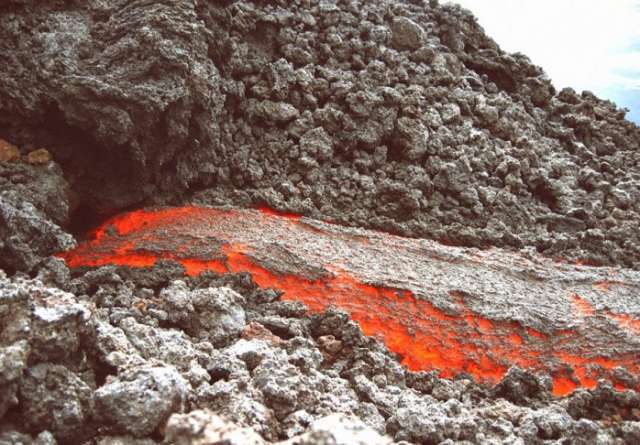That`s enough to generate supercritical steam that experts estimate could generate up to 50 megawatts of electricity - making it 10 times more efficient than traditional geothermal wells.
Geothermal energy has been around for decades, and involves drilling into the natural heat stored inside Earth to power turbines and generate electricity.
Particularly in Iceland, which is famous for its geologically active hot springs, more than a quarter of the country is powered by geothermal energy wells, which tap into hot rocks below Earth`s surface. (The rest of the country`s electricity needs are powered by hydroelectric plants.)
But there are limitations to how efficient geothermal can be, so the Iceland Deep Drilling Project (IDDP) is taking things up a notch, by attempting to bypass rocks altogether and drill into the source of Earth`s heat - the magma oozing into volcanoes.
The idea for the new project actually came from a mistake back in 2009, when the IDDP accidentally drilled into a magma reservoir about 2 kilometres (1.25 miles) below the surface, while trying to construct a traditional geothermal well.
As an experiment, they poured water down the hole to see how much energy it could generate, and they ended up creating the most powerful geothermal well ever, producing some 30 megawatts of power.
The project was short-lived, seeing as it was only ever set up as an experiment, but the team is hoping this new attempt will be more sustainable.
The drilling of the new hole began on August 12 in the geologically active Reykjanes region of Iceland. The researchers are hoping to reach the Mid-Atlantic Ridge - a major boundary between Earth`s tectonic plates - where magma heats seawater to temperatures of up to 1,000 degrees Celsius.
"People have drilled into hard rock at this depth, but never before into a fluid system like this," one of the team, Albert Albertsson, assistant director of an Icelandic geothermal-energy company called HS Orka, told New Scientist.
Not only would the water down there be super hot, it`s also under a lot of pressure (200 times atmospheric levels), which the team expects will generate `supercritical steam` - a state of matter that`s neither liquid nor gas, and holds way more heat energy than either.
That type of steam could have an energy capacity of up to 50 megawatts - around 10 times more than the 5 megawatts capacity of a typical geothermal well.
To put that into perspective, that means 50,000 homes could be powered, versus 5,000 from just one geothermal well.
"If they can get supercritical steam in deep boreholes, that will make an order of magnitude difference to the amount of geothermal energy the wells can produce," Arnar Guðmundsson from Invest in Iceland, a government agency that promotes energy development, told New Scientist.
But before you get too excited, for now, this is all purely theoretical - we need to actually get the new well up and running first. The hole should be drilled by the end of the year, and in the months that follow, we`ll get an idea of how much electricity such a set-up can generate.
If it works, it will be exciting for other regions around the world that have their own bevy of young volcanoes, such as Japan and California.
And, with Earth continually getting hotter, we`re in desperate need of more powerful alternatives to fossil fuels, so we`ll be watching the results closely.
/ScienceAlert/
More about:
















































